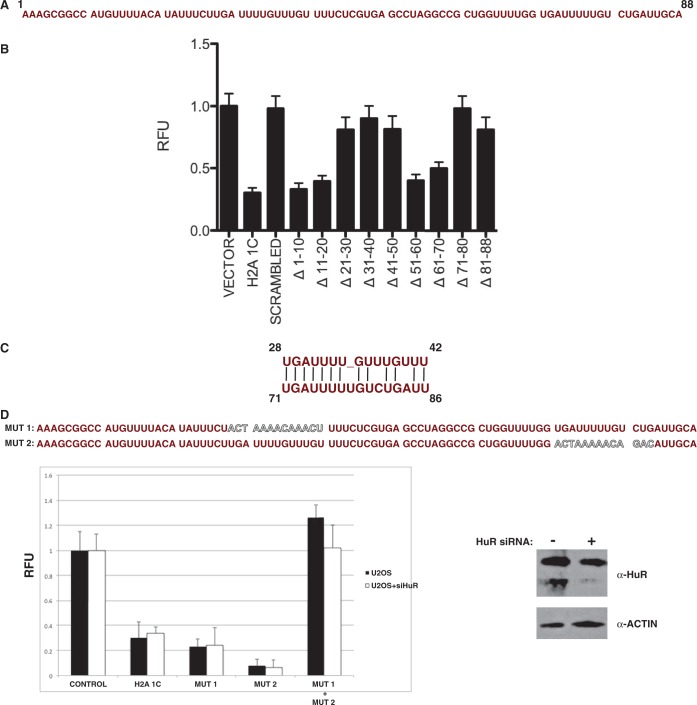Figure 6.
Identification of a repeated element in the H2A 1C 5′ UTR necessary for repressive activity. (A) Sequence of the H2A 1C 5′ UTR separated into 10 base segments. (B) Luciferase constructs containing the indicated H2A 1C 5′ UTR sequences were transfected into U2OS cells and assayed for fluorescence intensity. Control contains no insert, whereas the H2A 1C contains the entire H2A 1C 5′ UTR. The scrambled construct contains a randomized version of the H2A 1C sequence. The remaining constructs contain a deletion of the indicated bases from the H2A 1C 5′ UTR. The fluorescence signal of the control construct was set to 1 for each cell line. (C) Highly similar sequence elements identified in the indicated regions of the H2A 1C 5′ UTR. (D) Sequences of the H2A 1C 5′ UTR containing either the MUT1 or MUT2 mutation (top, altered sequences shown in outlined text). Lucifierase constructs containing the indicated H2A 1C 5′ UTR sequences were transfected into U2OS cells and assayed for fluorescence intensity (bottom left). Aliquots of cells were also treated with an siRNA directed against HuR 48 before luciferase assay. Efficiency of HuR knockdown was assayed by western blot analysis of whole-cell extracts using the indicated antibodies (bottom right).

